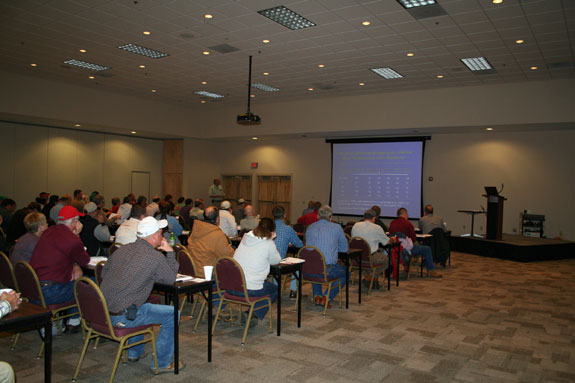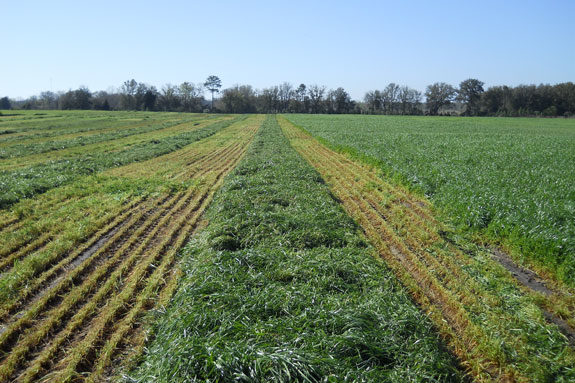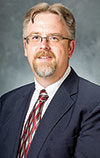Cautious optimism seemed to be a common sentiment among the participants at the 2012 Southeast Hay Convention. Steady spring rains brought refreshment to parched soil during the weekend before the convention. It seemed to refresh the spirits of the attendees, too.
Severe drought conditions in 2011 across the southeastern U.S. decreased yield, increased unit costs and made it difficult for hay producers in the region to meet the demand. In fact, nearly all of the 87 Southeast Hay Convention attendees indicated that it had substantially impacted their business.
These commercial hay producers and service providers had come from nine southeastern states and Puerto Rico to take part in the convention. So, the widespread impact of the 2011 drought was a common source of discussion.
It was welcome news then when Pam Knox, a climatologist at the University of Georgia, reported that the majority of climate models are predicting that the current La Niña ENSO (El Nino/Southern Oscillation) phase may be changing.
Climate scientists have shown a correlation between unusually cool ocean temperatures along the equator in the Pacific with warmer and drier conditions in the Southeast.
Though the effect of this La Niña phase is expected to continue to provide drier than normal conditions through at least May, news of a shift in these ocean temperatures to more of a neutral phase seemed to allow for a glimmer of optimism.
Favorable projections about market demand and supply seemed to sustain the participants’ mood as they look forward to the 2012 season.
Katelyn McCullock, Dairy and Forage Economist at the Livestock Marketing Information Center indicated that the beef and dairy industries’ demand for hay and forage remains relatively strong and that forage inventory remains weak.
These market fundamentals suggest hay prices should remain solid in 2012. Additional growth in hay exports is expected to further strengthen the market, too.

In addition to getting updates on the outlook for 2012, attendees at the Southeast Hay Convention had an opportunity to get an “A to Z” coverage of hay production and marketing principles.
Two of the most popular parts of the program were how to fine-tune one’s fertilization program and selecting the appropriate forage variety.
However, the highlight of the program was hearing from the producer panel. This year’s producer panel included Cory Tyre from Tyre Farms in Alma, Georgia, and Joey Hebert from JoLi Hay, L.L.C. in Palmetto, Louisiana. Cory and Joey shared many of the lessons and tricks they have learned over the years, including many that had been learned the hard way.
There were also several opportunities to see new methods and techniques being put into practice. During the field demonstration portion of the program, the participants had a chance to visit the University of Georgia’s dairy research center and the hay operations at the Abraham Baldwin Agricultural College.
Demonstrations included an assortment of winter annual forage harvest systems; a comparison of new weed control methods; using alfalfa to overseed bermudagrass for additional yield, improved quality and reduced N needs; soil compaction assessment methods; forage sampling techniques and many others.
More information on the 2012 Southeast Hay Convention, including handouts from all of the presentations, can be found on www.georgiaforages.com. More importantly, mark your calendars for March 12-13, 2013, for next year’s Southeast Hay Convention. FG
Dr. Dennis Hancock
Forage extension specialist
University of Georgia
PHOTOS
TOP: Annual ryegrass being mowed down in preparation for baleage production.
MIDDLE: Dr. Wayne Coblentz, Researcher at the USDA-ARS's Dairy Forage Research Center in Marshfield, Wisconsin, presenting info on baleage production systems. Photos by Dennis Hancock.











